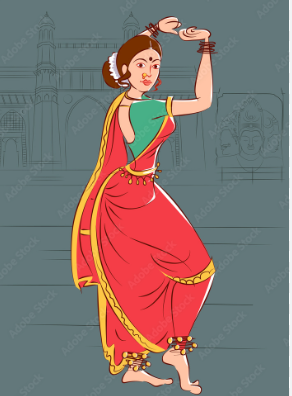Folk Dance of Maharashtra: Exploring the Rich Tapestry of Maharashtra’s Famous Dance
Maharashtra’s famous dance is folk dance of maharashtra, the vibrant and diverse state in western India, is not only known for its bustling cities and historic landmarks but also for its rich cultural heritage. Among the many cultural treasures that Maharashtra boasts, its folk dance forms take centre stage. In this article, we will delve into the captivating world of Maharashtra’s famous dance, exploring the history, significance, and diversity of these traditional art forms.
The Cultural Melting Pot of Maharashtra
Maharashtra is a land of immense cultural diversity, with a tapestry of languages, traditions, and communities. This diversity is beautifully reflected in the myriad folk dance forms that have evolved over centuries. Each dance form is a testament to the state’s rich history and the communities that have contributed to its cultural mosaic.
Lavani: The Energetic Dance of Maharashtra
Lavani is one of the most famous and vibrant folk dances of Maharashtra. It originated in the regions of Pune, Satara, and Kolhapur and is known for its high-energy and rhythmic movements. Lavani is often performed to the beats of the traditional dholki (drum) and lezim (a percussion instrument). The dance is characterised by graceful yet energetic footwork, expressive facial expressions, and colourful attire.
Lavani is not just a dance; it is a form of storytelling. Performers use their expressions and movements to convey tales of love, social issues, and everyday life. It is a celebration of womanhood and has a strong presence in Maharashtrian folk culture.
Tamasha: The Folk Theater Dance-Drama
Tamasha is another significant folk art form of Maharashtra that combines dance, music, and drama. It is a lively and entertaining genre of folk theatre that has been a source of amusement and social commentary for generations.
Tamasha performances often feature humorous skits, vibrant dance sequences, and catchy music. The dance styles in Tamasha can vary, with influences from Lavani, Koli, and other folk dance forms. Tamasha troupes travel from village to village, entertaining audiences with their colourful and spirited performances.
Lezim: The Graceful Group Dance
Lezim is a traditional group dance of Maharashtra, often associated with celebrations and festivals. It is performed with the lezim, a musical instrument that resembles a pair of small cymbals with jingling bells. The dance involves synchronized movements, where performers create intricate patterns and formations while holding the lezim.
Lezim dance is not just about physical coordination; it also embodies a sense of community and togetherness. It is often performed during Ganesh Chaturthi and other festive occasions, bringing people together in joyful celebration.
Koli Dance: Celebrating Coastal Culture
The Koli community, native to the coastal regions of Maharashtra, has its unique dance form known as the Koli dance. This folk dance reflects the vibrant culture of the coastal communities and is characterised by rhythmic movements and colourful attire. Koli dance is often performed during fishing festivals and other coastal celebrations, where it serves as a symbol of the community’s close connection to the sea.
Where to Experience Maharashtra’s Famous Dance
To witness the beauty and vibrancy of Maharashtra’s folk dances, consider attending local festivals, cultural events, and performances. Many cities and towns in Maharashtra host cultural programs and showcases where these traditional dance forms take centre stage. Additionally, cultural centres, museums, and heritage sites often provide insights into the history and significance of these dance forms.
In Conclusion
The folk dances of Maharashtra are not just performances; they are living expressions of the state’s cultural diversity, history, and traditions. Lavani, Tamasha, Lezim, and Koli dance are windows into the soul of Maharashtra, celebrating its people, stories, and the tapestry of life.
As you explore Maharashtra’s famous dance forms, you embark on a journey to discover the rhythm and spirit that define this remarkable state. These dances serve as a bridge between the past and the present, connecting generations and preserving the cultural heritage of Maharashtra.
Read more Foot-tapping Rhythms of Goa: Exploring Goa’s Most-Loved Folk Dances

